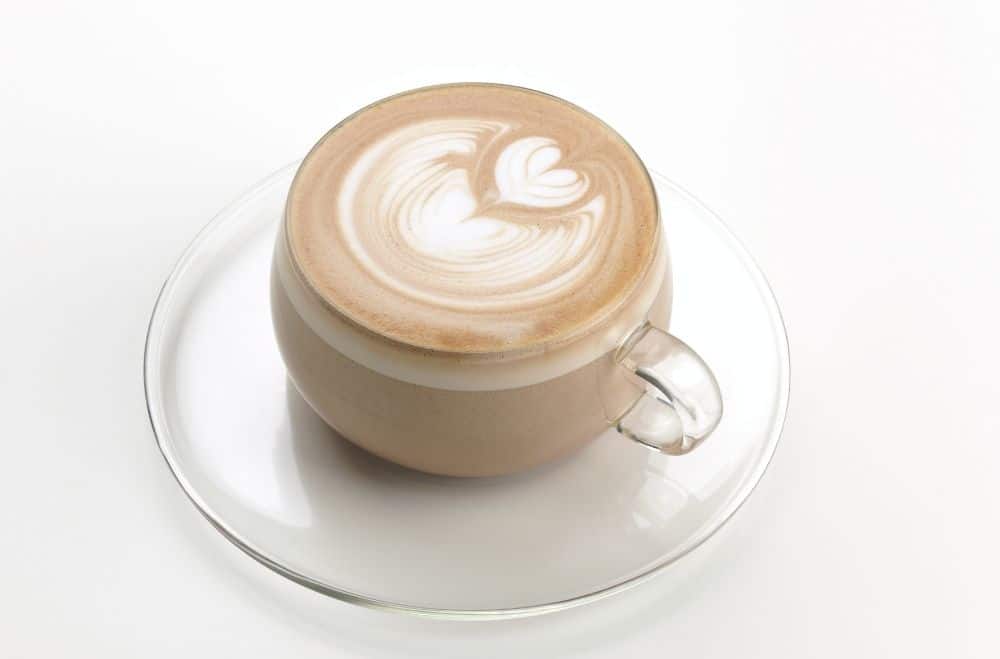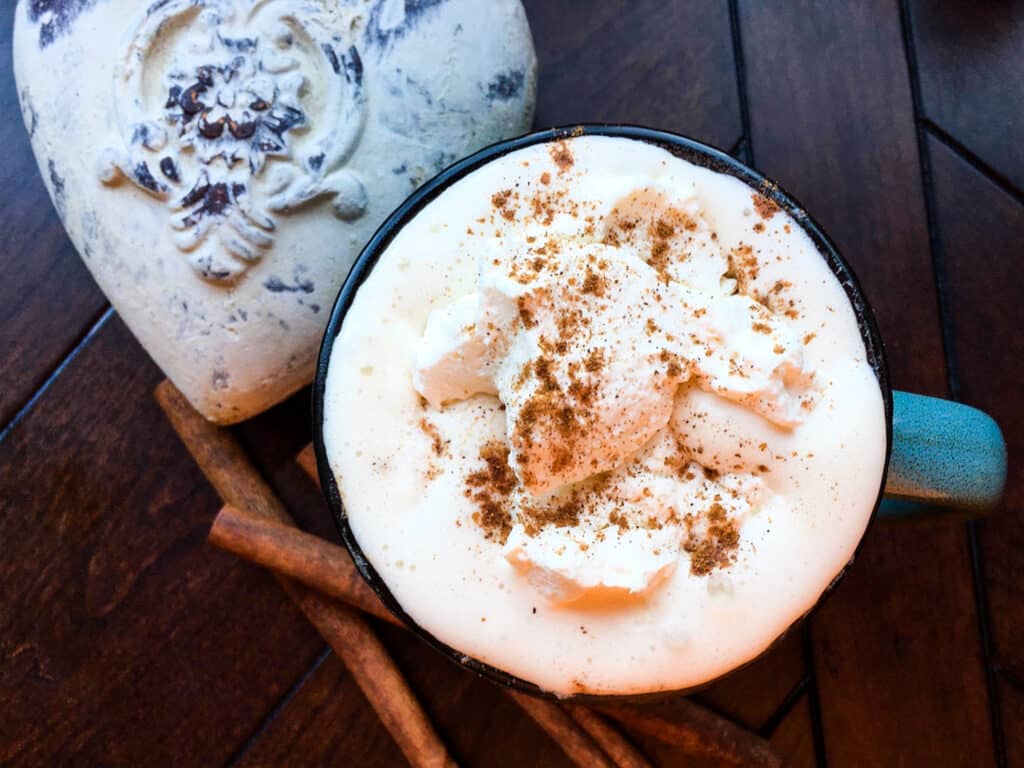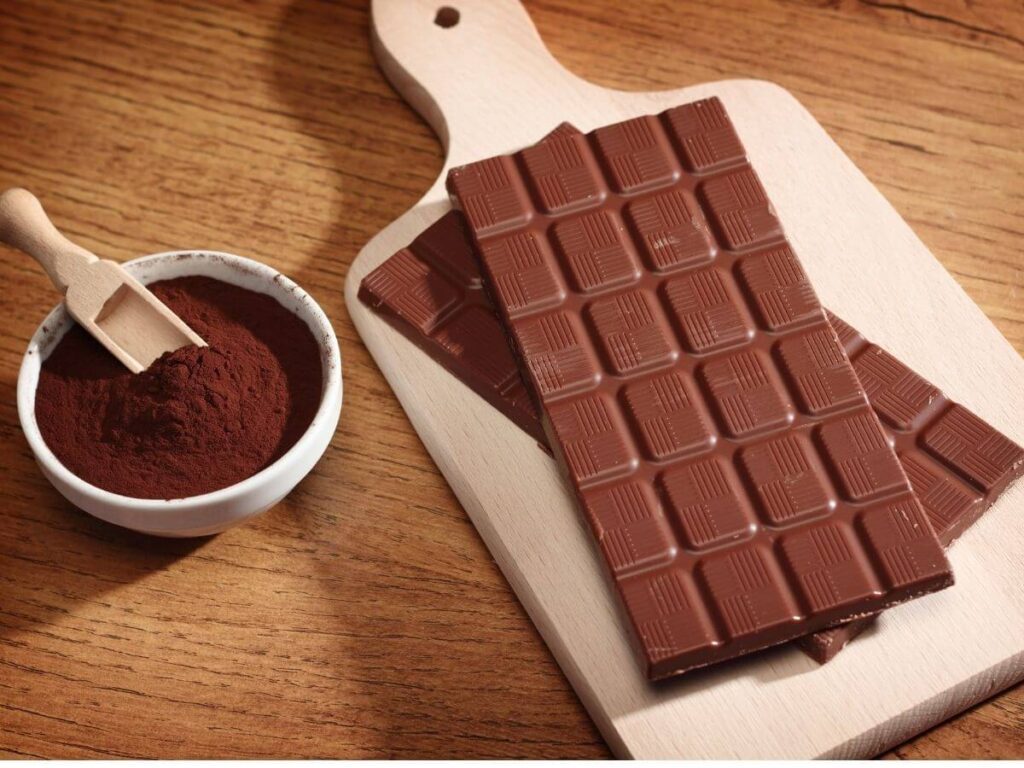
Cafe con leche and latte are two beloved coffee beverages enjoyed by millions of people around the world. While both drinks feature a blend of coffee and milk, there are some key distinctions. Keep reading to learn more about Cafe con Leche vs Latte.
Cafe Con Leche vs Latte: Core Differences
Origin
Cafe con Leche is a popular coffee beverage in Spanish and Latin American cultures. It has its roots in Spain and has been embraced by many countries in Central and South America.
Latte, on the other hand, is an Italian creation that gained popularity in Europe and America. It is derived from the Italian phrase “caffè e latte,” which means coffee with milk.
Ingredients
Both cafe con leche and latte are made with espresso and milk. However, there can be variations in the types of milk used. For instance, cafe con leche is sometimes made with scalded milk or condensed milk, whereas lattes typically use steamed milk.
Ratio of Coffee to Milk
One key difference between cafe con leche and latte is the ratio of coffee to milk. Cafe con leche typically comprises equal parts espresso and milk, resulting in a stronger coffee flavor and higher caffeine content. In contrast, a latte has a 1:3 ratio of espresso to milk, making it milder and sweeter in taste.
Preparation
Cafe con leche and latte also differ in their preparation methods:
- Cafe con Leche: It involves mixing an espresso shot with scalded milk and caramelized sugar. In some countries, variations include using condensed milk, whole milk, or dairy milk.
- Latte: It is prepared by combining a shot of espresso with steamed milk and a small amount of foamed milk on top. This creates a creamier texture and a distinct layer of foam, which is often used for latte art.
Texture
Cafe con leche and latte both have a creamy, smooth texture due to the presence of hot milk. Lattes often have a layer of microfoam – lightly textured milk froth, that adds a velvety touch to the overall drink. Cafe con leche generally has less foam.
Aroma
The aroma of cafe con leche and latte typically stems from the espresso base that they share. High-quality espresso beans provide rich and complex scents. In both drinks, the milk’s steam enhances the coffee aroma, allowing you to appreciate the full range of the espresso.
Bitterness
The bitterness in both cafe con leche and latte comes from their espresso component. The difference in bitterness between the two drinks is generally subtle but can depend on the following factors:
- The espresso’s roast profile: Darker roasts tend to be more bitter than lighter roasts
- The coffee-to-milk ratio: Cafe con leche usually has a 1:1 ratio of espresso to milk, while lattes have a 1:3 ratio. More milk can potentially dilute the bitterness of the espresso, making lattes slightly less bitter than cafe con leche in some cases.
Cafe Con Leche vs Latte – Flavor and Sweetness

Sweetness
Cafe con leche and latte have varying levels of sweetness. The sweetness of a latte mainly comes from two sources: naturally occurring sugar in the steamed milk and the added sugar or sweeteners depending on the individual’s preference. Cafe con leche, on the other hand, can be inherently sweeter when made with condensed milk. This gives the drink a creamier and sweeter flavor even without added sugar. When made with whole milk, cafe con leche’s sweetness will be similar to that of a latte.
Flavored Lattes

Lattes are quite popular for their versatility. You can easily add different flavors to a latte. One popular fall flavor is the pumpkin spice latte. With the addition of a pumpkin spice syrup, you get a hint of cinnamon, nutmeg, and pumpkin that can bring a warm comfort to your latte experience. There are many other flavored syrups available as well, such as caramel, hazelnut, and vanilla. Just about any flavor that complements the espresso and milk can be used to create the perfect latte to your taste.
Cocoa Powder

When you want to add a touch of chocolate to your café con leche or latte, consider sprinkling some cocoa powder on top. It not only makes for an aesthetically pleasing presentation but also contributes a subtle chocolate flavor to your drink. Cocoa powder is an easy addition that can be used to elevate both your latte and café con leche experience.
Cafe Con Leche vs Latte: Popularity and Cultural Influence
Coffee Shop Trends in America and Europe
In America and Europe, the latte has gained widespread popularity, especially with the rise of coffee chains like Starbucks. This Italian creation is often combined with various flavors, such as caramel or pumpkin spice, to cater to the diverse tastes of customers. Lattes have become a staple on coffee shop menus, from small local cafes to international brands.
Cafe con leche is originated in Spain and has since spread to many Spanish-speaking countries and regions. It is usually served simpler, with a focus on the bold coffee flavor in contrast to the more elaborate latte variations seen in America and Europe.
Latin American Variations
Cafe con leche’s prominence is observed in various Latin American countries, each with their unique variations. For example, in Cuba, a Cuban cafe con leche incorporates a darker, stronger espresso coffee. Argentinians and Uruguayans also enjoy a variation with both coffee and yerba mate (a caffeinated herbal beverage). The Mexican style combines strong coffee with cinnamon and piloncillo (raw cane sugar).
Caffeine Content and Calories
When it comes to caffeine content, café con leche generally packs a stronger punch. It has a greater espresso-to-hot-milk ratio compared to a latte, with equal parts espresso and milk. On the other hand, lattes follow a 1:3 ratio, meaning they contain a smaller volume of espresso and more milk. This also results in a milder, smoother flavor, making them a popular choice in Europe and America.
The calorie count in both drinks depends largely on the type of milk and any sweeteners added. With that said, an 8-ounce serving of latte made with whole milk typically contains around 120-150 calories. However, café con leche, which also has an 8-ounce serving, contains approximately 100-130 calories when made with evaporated milk. Therefore, café con leche can be a slightly lighter option.
Espresso Machines and Brewing Techniques
When it comes to brewing cafe con leche and latte, there are various brewing techniques and espresso machines that can be used to create these delicious beverages. In this section, we will explore three popular methods: using a Moka Pot, a French Press, and an Espresso Maker.
Moka Pot
The Moka Pot is a stovetop espresso maker that originates from Italy. It’s a simple brewing device that creates a strong coffee base for both cafe con leche and latte. The Moka Pot works by using steam pressure to force hot water through finely ground coffee, producing a rich and concentrated extraction.
- To brew using a Moka Pot, simply fill the bottom chamber with water, add finely ground coffee to the filter basket, and place it on the stovetop.
- Heat the water until the steam pressure pushes it through the coffee grounds and it reaches the top chamber.
- Combine the coffee with steamed milk to create a cafe con leche or a latte.
French Press
Another versatile brewing method is the French Press, which is a popular choice among coffee enthusiasts looking for a fuller and more robust flavor profile. While not an espresso maker, the French Press can still provide a strong coffee base suitable for cafe con leche and latte.
- To use a French Press, start by adding coarsely ground coffee to the glass beaker and pour hot water over the grounds.
- Allow the coffee to steep for approximately four minutes, then press the plunger to separate the coffee grounds from the liquid.
Espresso Maker
The Espresso Maker is the most common way to brew espresso, which is the foundation for cafe con leche and latte. Espresso machines work by forcing hot water through finely ground coffee under high pressure, resulting in a rich and concentrated extraction with a distinctive crema on top.
There are various types of espresso machines, including manual, semi-automatic, and fully automatic models. Depending on the machine’s specifications, it’s possible to control variables such as water temperature, pressure, and extraction time to achieve the perfect espresso shot.
Many espresso makers also include a steam wand, making it easy to steam and froth milk for creating a cafe con leche or a latte.
Coffee and Latte Art

Latte art is a creative way to give a visual appeal to your coffee. It involves skillfully pouring steamed milk into a shot of espresso, creating beautiful patterns like hearts, flowers, or even more intricate designs. Coffee enthusiasts and baristas alike, take great pride in perfecting their latte art techniques, making the simple task of serving coffee an engaging experience.
In either a latte or café con leche, coffee art can add an extra touch of flair. While latte art is more commonly seen due to the creamy texture of the latte’s milk foam, creative baristas can achieve similar results with café con leche. Whether it’s a simple heart or an intricate landscape, coffee art can be a delightful way to enhance the presentation of both lattes and café con leches.
Cafe Con Leche vs Latte – FAQs
What is the main difference between café con leche and latte?
Café con leche has equal parts espresso and hot milk, while a latte uses more milk than espresso, with about a 1:3 ratio. Both drinks feature steamed milk, but the latte also has foamed milk on top.
How does a café con leche compare to a cappuccino?
A café con leche is more similar to a latte, as both have a higher milk-to-espresso ratio. A cappuccino has equal parts of espresso, steamed milk, and foamed milk, resulting in a stronger coffee flavor.
What is the difference between a flat white and a café con leche?
A flat white is made with espresso and steamed milk, but it has a thinner layer of microfoam compared to a latte. Café con leche also uses equal parts espresso and steamed milk but doesn’t have any foam on top.
Is a cortado similar to a café con leche?
Both cortado and café con leche have equal parts espresso and milk. However, a cortado uses warm, slightly steamed milk, while a café con leche uses hot steamed milk.
How does a café bombon relate to a café con leche?
A café bombon is a sweet coffee drink that originates in Spain. It’s made using equal parts espresso and sweetened condensed milk, making it thicker and sweeter than a café con leche.
What are the key differences between a latte and a café au lait?
A latte consists of espresso, steamed milk, and a layer of foam. A café au lait is made with strong brewed coffee and hot milk, without the foam. Café au lait also has a higher coffee-to-milk ratio compared to a latte.




